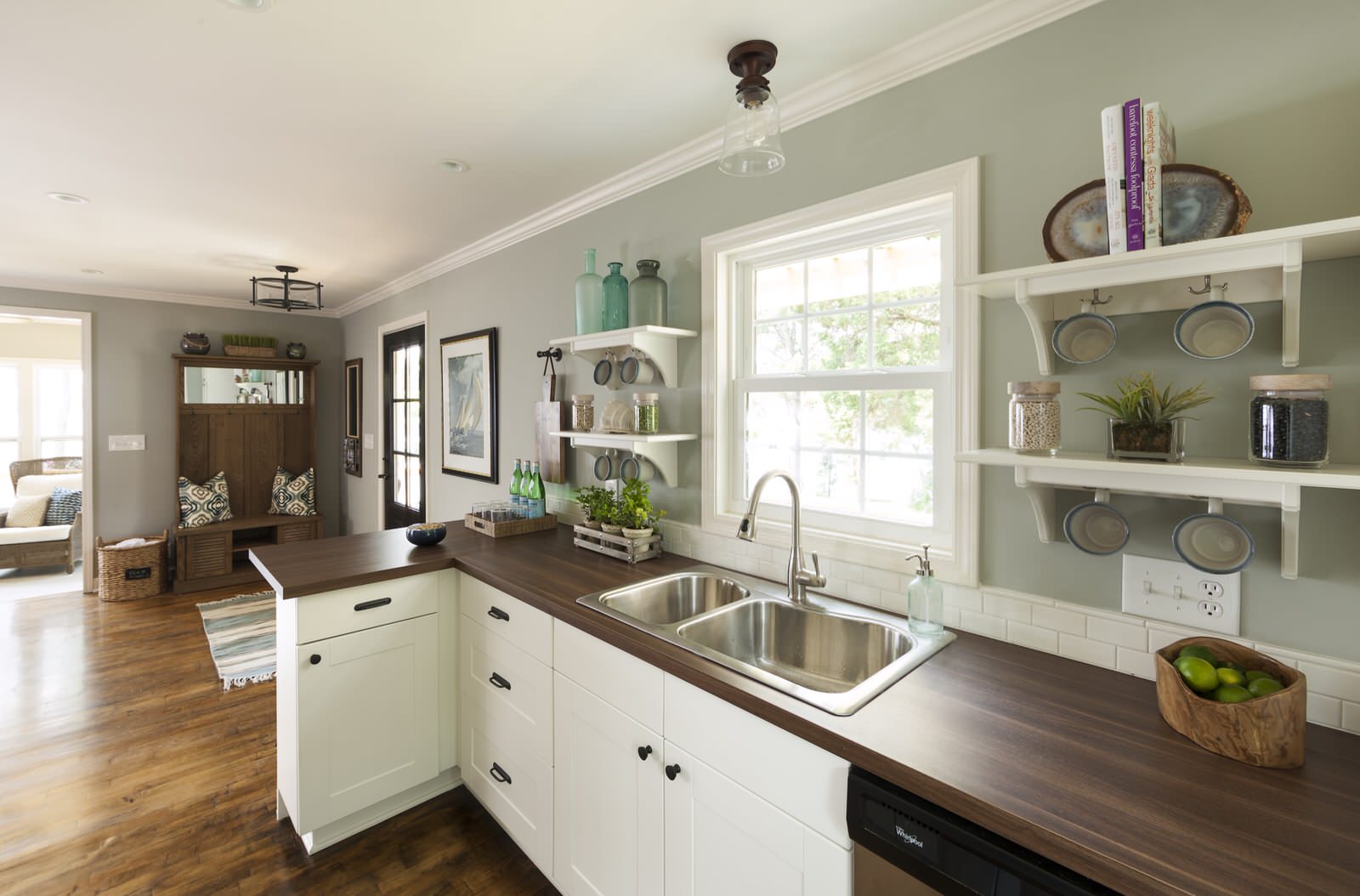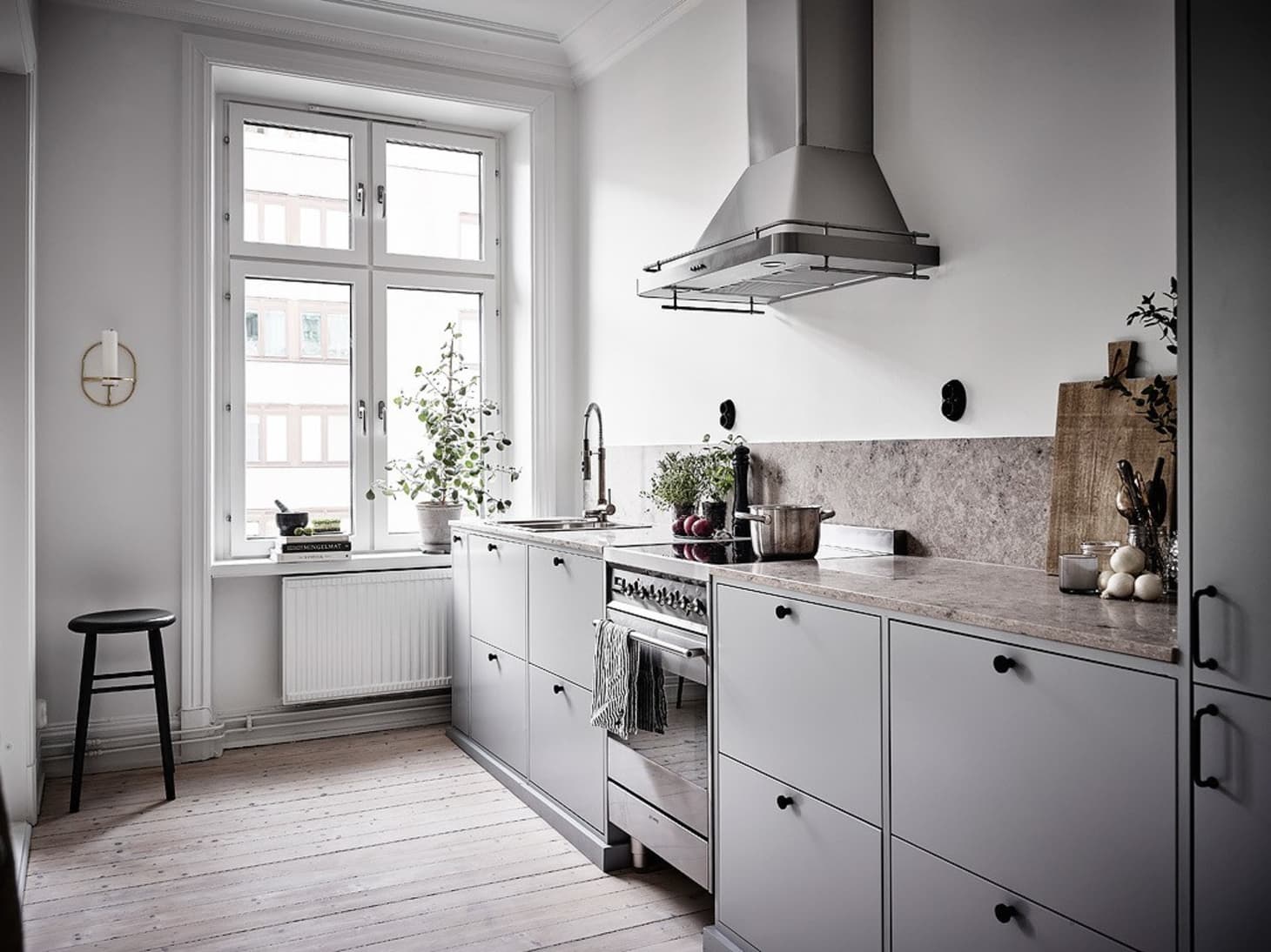The Appeal of a Kitchen Backsplash Without Cabinets: Kitchen Backsplash No Cabinets

In a world where minimalism and functionality reign supreme, the concept of a kitchen backsplash without cabinets has emerged as a bold and captivating design choice. This approach, often seen in modern and contemporary kitchens, offers a unique blend of aesthetic appeal and practical benefits.
The Open and Minimalist Feel
A kitchen backsplash without cabinets creates a sense of openness and spaciousness. The absence of upper cabinets eliminates visual clutter, allowing the eye to flow freely across the space. This minimalist aesthetic is particularly effective in smaller kitchens, where maximizing the sense of space is crucial.
Enhanced Visual Appeal
A backsplash without cabinets becomes a prominent design element, allowing for creative expression and a focus on the overall aesthetic. The backsplash can serve as a focal point, drawing attention to a specific area, such as a unique countertop material or a statement lighting fixture. It can also introduce a pop of color or texture, adding visual interest to the kitchen.
Effective in Various Kitchen Layouts
A backsplash without cabinets can be particularly effective in several kitchen layouts:
- Open-concept kitchens: The minimalist approach of a backsplash without cabinets complements the open flow of these spaces, creating a seamless transition between the kitchen and living areas.
- Small kitchens: By eliminating upper cabinets, a backsplash without cabinets can visually enlarge a small kitchen, making it feel more spacious and airy.
- Kitchens with high ceilings: The absence of upper cabinets allows for the vertical space to be emphasized, creating a sense of grandeur and enhancing the overall architectural design.
Design Considerations for a Backsplash Without Cabinets

A backsplash without cabinets presents a unique opportunity to enhance the aesthetic appeal and functionality of a kitchen. It allows for a more minimalist and streamlined look, while still providing a protective barrier against splashes and stains. Careful consideration of material choices, design elements, and overall scale are crucial to achieving a cohesive and visually pleasing outcome.
Material Choices
The choice of materials for a backsplash without cabinets is critical to its longevity, maintenance, and overall style. Each material offers a distinct set of properties, impacting its suitability for different kitchen aesthetics and usage patterns.
- Tile: Ceramic, porcelain, and glass tiles are popular choices for backsplashes due to their durability, moisture resistance, and wide range of colors, patterns, and finishes. Ceramic tiles are generally affordable and easy to clean, while porcelain tiles offer greater durability and scratch resistance. Glass tiles offer a sleek and modern aesthetic, reflecting light and adding visual interest.
- Stone: Natural stone materials like marble, granite, and limestone add a touch of elegance and sophistication to a kitchen. They are highly durable and resistant to heat and scratches, but they require regular sealing to prevent staining and etching. Stone backsplashes can be expensive, and their maintenance can be more demanding.
- Metal: Stainless steel, copper, and brass are popular choices for a modern and industrial aesthetic. Metal backsplashes are durable, easy to clean, and can be customized with different finishes and patterns. They can reflect light and add a touch of warmth to the kitchen space.
- Acrylic: Acrylic sheets offer a smooth, non-porous surface that is easy to clean and maintain. They are available in a wide range of colors and patterns, allowing for a customizable and modern look. Acrylic is a lightweight and affordable material, making it a practical choice for backsplashes.
- Concrete: Concrete backsplashes offer a raw and industrial aesthetic, often incorporating unique textures and patterns. They are durable and resistant to heat and scratches, but they require regular sealing to prevent staining and moisture damage. Concrete can be a more expensive option, but it can be customized to match the overall kitchen design.
Design Ideas
Integrating a backsplash without cabinets into different kitchen styles requires thoughtful design considerations to ensure a harmonious and cohesive aesthetic. The following ideas provide inspiration for creating visually appealing backsplashes that complement the overall kitchen design.
- Modern Kitchen: A modern kitchen often features clean lines, minimalist design, and neutral color palettes. A backsplash without cabinets can be achieved with sleek materials like glass tiles, stainless steel, or acrylic. Geometric patterns, bold colors, or a single, large-scale tile can add visual interest.
- Farmhouse Kitchen: A farmhouse kitchen often features rustic elements, natural materials, and a warm and inviting atmosphere. A backsplash without cabinets can be achieved with natural stone materials like marble, granite, or limestone. Subtle patterns, muted colors, and a distressed finish can enhance the farmhouse aesthetic.
- Industrial Kitchen: An industrial kitchen often features exposed brick, metal accents, and a raw and edgy aesthetic. A backsplash without cabinets can be achieved with materials like metal, concrete, or reclaimed wood. Bold colors, exposed brick, or a distressed finish can enhance the industrial feel.
Size and Scale
The size and scale of the backsplash are crucial considerations in relation to the overall kitchen space. A backsplash that is too small may appear insignificant, while a backsplash that is too large may overwhelm the space. The backsplash should be proportional to the size of the kitchen and should complement the existing features, such as countertops and appliances.
Functional Considerations for a Kitchen Backsplash Without Cabinets

A kitchen backsplash without cabinets can present unique challenges when it comes to functionality. However, with careful planning and design, you can create a kitchen that is both stylish and practical. Here are some key considerations for maximizing functionality in a cabinet-free kitchen.
Storage Solutions for a Cabinet-Free Kitchen, Kitchen backsplash no cabinets
Creating functional storage in a kitchen without cabinets requires a strategic approach. Open shelving, floating shelves, and countertop organizers offer versatile solutions to keep your kitchen organized and efficient.
- Open Shelving: Open shelving provides a visually appealing and accessible storage solution. Choose shelves made from durable materials like wood, metal, or glass, and consider incorporating different shelf depths to accommodate various items.
- Floating Shelves: Floating shelves offer a minimalist aesthetic and create a sense of spaciousness. These shelves are typically mounted directly to the wall, maximizing vertical space and minimizing clutter.
- Countertop Organizers: Countertop organizers provide a convenient way to store frequently used items. Look for organizers made from materials that are easy to clean and resistant to spills, such as stainless steel or acrylic.
Choosing a Backsplash Material
The backsplash material plays a crucial role in maintaining a clean and functional kitchen. It is essential to select a material that is easy to clean and resistant to stains and scratches.
- Natural Stone: Natural stone backsplashes, such as granite, marble, or slate, offer a timeless and elegant look. However, they require regular sealing to prevent staining and scratches.
- Ceramic Tile: Ceramic tile is a popular choice for kitchen backsplashes due to its durability, affordability, and wide range of styles and colors.
- Glass Tile: Glass tile adds a modern and sophisticated touch to a kitchen. It is also easy to clean and resistant to stains and scratches.
- Stainless Steel: Stainless steel backsplashes are highly durable and easy to clean. They offer a sleek and contemporary look that complements modern kitchens.
Lighting Considerations
Proper lighting is essential for enhancing visibility and creating a warm ambiance in a kitchen without cabinets.
- Under-Cabinet Lighting: Under-cabinet lighting provides task lighting for food preparation and cleanup. LED lights are an energy-efficient and long-lasting option.
- Recessed Lighting: Recessed lighting offers a clean and modern look. It can be used to create a general lighting effect or highlight specific areas of the kitchen.
- Pendant Lights: Pendant lights add a touch of style and can be used to illuminate the backsplash area. Choose pendant lights that complement the overall design of the kitchen.
Kitchen backsplash no cabinets – Imagine a kitchen backsplash without cabinets, a bold, minimalist look! If you’re going for this style, you might need to remove existing cabinets first. Learn how to do it like a pro with this guide on how to demo a kitchen cabinets.
Once your cabinets are gone, you’ll have a blank canvas for a stunning backsplash that really pops!
A kitchen backsplash without cabinets can be a bold design choice, creating a minimalist and modern feel. But don’t forget the importance of stylish cabinet doors to complete the look! For inspiration and guidance on all things cabinet doors, check out cabinet doors n more , a comprehensive resource for everything from style and hardware to installation.
Once you’ve got your perfect doors, you can really showcase your kitchen backsplash, letting it shine as the star of the show!
